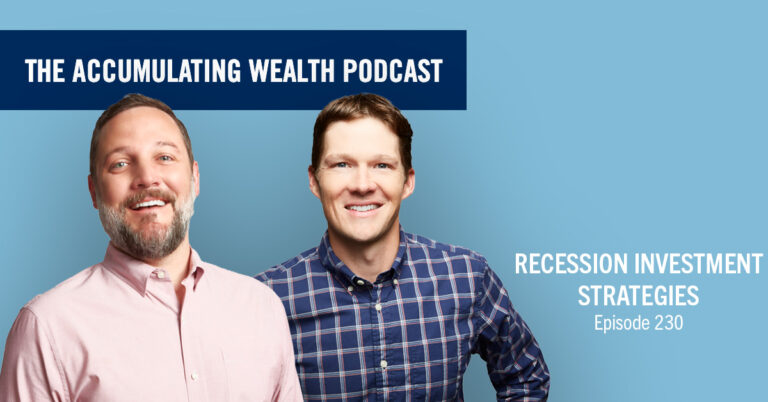Volatile markets, stubborn inflation and a decidedly uncertain economic outlook are forcing investors to reevaluate how to optimize both their long- and short-term savings strategies. Many investors, particularly those with extra cash, are turning to high-yield savings accounts to offset inflation and reach their savings goals.
With many options in the upper 3% range and higher, CPA and Financial Advisor Justin Fry says investors have a unique opportunity to increase earnings potential without sacrificing flexibility in their investment mix.
“Right now, we’re seeing savings account rates we haven’t seen since before 2010,” says Justin.. “It has been so long since these vehicles have been thought of as a serious asset class to be utilized within one’s portfolio. Now, these high-yield savings account are absolutely worth exploring.”
Before we dive into specific scenarios where a high-yield savings account makes sense, let’s quickly define what it is.
A high-yield savings account is, quite simply, a type of savings account that offers a higher interest rate than traditional savings or checking accounts. Typically offered by online banks, high-yield accounts are FDIC-insured (if not, keep looking), offer a variable interest rate, and operate for the most part like a traditional savings account. The biggest difference is, your money grows faster.
“A high-yield savings account is a great option for when liquidity is the key driver,” says Justin. “A no-brainer scenario is your 3-to 18-month emergency fund. If you have that money sitting in a traditional savings account or money market fund earning less than 1%, you could be leaving dollars on the table. It is, at the very least, a way to help combat inflation.”
Another scenario where a high-yield savings account might be a good option is a short-term savings need with a specific goal, like saving for a down payment on a building. You might not need to buy the car for a year, but what if a great deal falls in your lap? With a high-yield savings account, you have the cash on hand to pull the trigger without sacrificing earnings potential.
Same goes for a dental practice looking to upgrade or invest in new equipment in the near future. Starting a savings fund now in a high-yield savings account can help practice owners reach their goal faster.
On the flipside, if the money will not be needed for three years or longer, Justin says there are other vehicles out there that can deliver a high interest rate, guaranteed over time, or even some tax savings.
These savings accounts could be a good supplement to your financial plan, but like everything, it’s not an absolute. To make sure you’re making the best use of your short-term cash and long-term investments, Justin recommends reaching out to a financial advisor to set up a 1-3-5-30 year financial plan.
“Working with an advisor to lay out a short-, mid- and long-term plan is key,” says Justin. “Not only will they help you maximize your use of high-yield savings accounts now, they’ll help you redirect when the rates do eventually come down.”
When rates go down will be is hard to predict, but with the FED expected to keep rates high through the back half of 2023, high-yield savings accounts look to be an attractive near-term option for investors.
“However long these rates last, it’s important to remember that this will be a temporary situation,” says Justin. “A good financial advisor will have their finger on the pulse of the rates. They’ll help you navigate the tax implications. If you’re nearing retirement, they’ll help you adjust and optimize your plan.”
Another complicating factor is, not all high-yield savings accounts are the same. From minimum deposit requirements to withdrawal fees, it’s important to do your homework and understand the terms and conditions before locking into an account based solely on the rate.
Here are some key things to look out for when researching high-yield savings accounts:
- Competitive rate – Look for a rate near the top of what is being offered in the market.
Here’s a good place to start. - Fees – There should be no transfer fees or minimum balance requirements, penalties or transfer fees that could eat into the interest you earn.
- Access – Look for accounts that have no transfer restrictions, offer ATM withdrawals, are linkable to a checking account and, ideally, have an app for quick access.
- FDIC-Insured – Especially in today’s volatile banking environment, verifying that the account is FDIC-insured is imperative.
- No Rate Cap – Some high yield accounts will not go higher than the rate when you signed up. Read the fine print to make sure yours will.
As a final piece of advice when looking at high-yield investment accounts, Justin recommends not completely discounting your current bank simply because it’s not offering a high interest rate, especially if you have built a trusted relationship with them. Make a phone call to see if there is a way to make a plan work.
“Banks right now are ultra-competitive,” says Justin. “It can’t hurt to take them an offer from an online bank, because they often can and will move mountains to keep your business.”
To learn more opportunities to help your money grow, or get answers to any other business or personal finance question you may have, talk to CWA. Set up your free consultation today.














